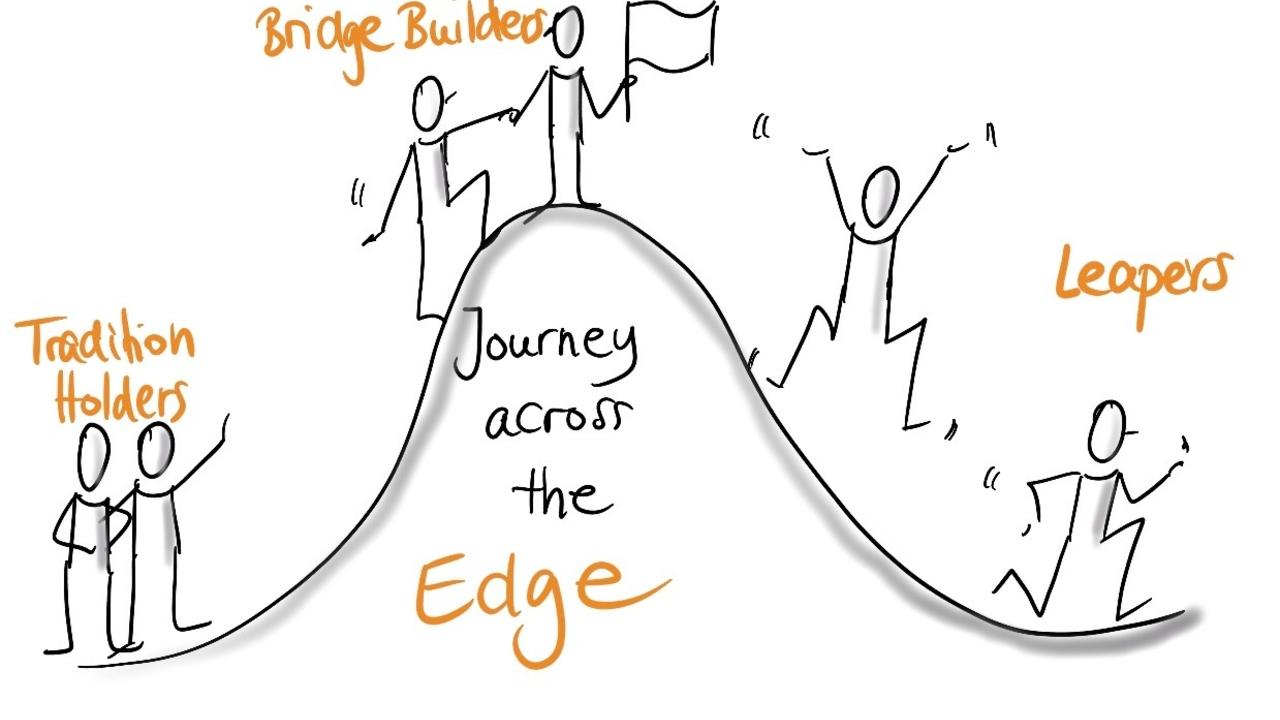Journey Across the Edge

This is how we don't leave people behind…
Saturday I planted Kangaroo Paw. When I planted it, its head was drooping, but within two days of good soil and fertiliser, it stands tall and is thriving.
When being presented with a new environment, nature adapts to survive.
Humans on the other hand, resist change, because it threatens their status quo and sense of security.
With the current Covid-19 crisis, we are forced to change at a rapid pace. However this doesn't mean we can adapt with the same speed
In my role introducing new ways of working and transformational change, I sometimes wish people were more like my plant.
If my Kangaroo Paw was a human, I wonder whether it would have questioned me about leaving the Bunnings nursery, after all, it was comfortable there and that’s what it had always known. As I was repotting it, I wonder whether it would have asked me 20 questions about soil conditions, sun exposure, the new plant neighbours and expected watering cycles.
Resistance is a natural part of change. With the right tools and approach, we can reduce that by managing how change is presented.
I remember vividly sitting in a change program update on new capabilities and I felt like the facilitator was rushing along, skimping over details, assuming knowledge and terms. I felt a lot of resistance coming up. It was too fast, it lacked detail, it lacked interaction and I felt railroaded. Humbled by my own feelings of resistance, I vowed to ensure any of my change programs allowed for all to adapt.
Yet, we don’t always have that luxury. Sometimes market pressures force us to turn things around quickly. We need to develop a mindset that is adaptable to change of all speeds.
When we accept that we are in a constant sea of small and large changes, we can work with resistance behaviours consciously.
Based on the work of process psychologist Arnold Mindell, understanding where we are and what we know = Primary, what is unknown and desired = Secondary and Edge, a symbol of what we have to cross to reach the Secondary, we can start working on our change.
In addition to small and large changes, different people adapt to change in different ways and again differently in the varying contexts they find themselves in – someone could be all embracing of one change, yet vehemently resisting another.
Recently, I found myself at my own edge, leaving an organisation I had spent 7 years in, stepping across to an unknown future. Whilst I was experiencing a multitude of sometimes conflicting emotions, wondering whether my new job title should be “Beach Bum”, I pondered my resistance and whether this was the first of many edges to cross.
We need to get better at managing our own emotional health and hygiene and be vigilant of noticing our own edges.
As business transformation consultants, we want simple, accessible and elegant ways to manage that complexity and draw on models of change that cater to the heart of the matter.
It’s our job to connect people with the change and make it meaningful for them. Humans are by nature emotional beings and change occurs at the emotional level.
It’s useful to know that there are three fundamental styles of change adaptation.
Leapers – loving change they adapt quickly, getting excited about the new thing. They are great advocates, but get bored easily. They may not consider all details and the impact of the change.
Use your leapers for advocacy, and give them a clear task in your change program. Ensure their role is varied, challenging and key.
Bridge Builders – these cross the edge later when the kinks have been worked out, as they like the change to be orderly. Their greatest strength is their thoughtfulness. True to their name, they are the bridge builders between the leapers and tradition holders. Utilise them to improve the change.
Tradition Holders – tend to resist change and uphold the status quo. Often seen as obstructionist, they perform a critical role in any change. Their strength is in forcing the organisation to be very clear about the cost-benefit of the change and they are sceptical of quick fixes. Utilise them to harvest the deep knowledge of the organisations processes, often just held in their head.
On occasion, when tradition holders are unable or unwilling the cross the edge, they make themselves redundant.
So there you have it, parts of the mosaic of intelligent, intentional change to bring people along the journey, at their pace, respecting their agency and ensuring they play a vital part.
Based on the work of Anne Rod and Marita Fridjhon – Creating Intelligent Teams.
Stay connected with news and updates!
Join our mailing list to receive the latest news and updates. Your information will not be shared.

